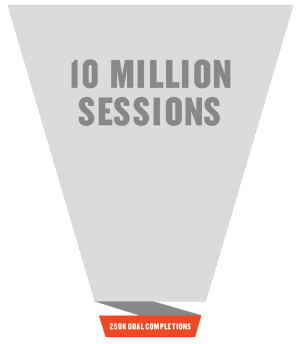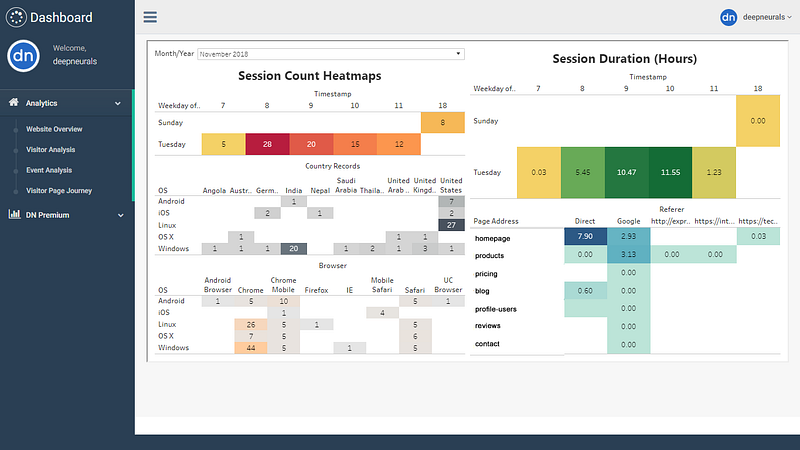Behavioral Marketing, For the Modern-Day Marketer

Behavioral Marketing, For The Modern-Day Marketer
UPDATE: The tool (deepneurals) in discussion has been taken down and is not live anymore
It’s 2019 and the idea of “freedom” to do anything is at its peak. While this is great news for “consumers” but a headache for the “businesses” people.
When we perform multiple activities, we exhibit different behaviors at every stage. Take your typical workday, you might start “low” on a Monday morning and finish on a “high”.
While this is just your offline behavior but unconsciously this affects your online behavior, actions, clicks and almost every decision on the internet.
The Challenge
Businesses do not know how you are feeling today, how your recent weekend was or anything that happened to you offline, but they still want to sell you their products and since you are different from their ideal customer, it becomes essential for them to track your online activity.
The buttons you tap today can very well predict your actions for tomorrow
You do realize the problem being solved here, but at the end of the day, a marketer i.e. you, is solving the very basic of problems of increasing The Revenue, only the means of approaching your problem is different from the traditional ways and that’d be advertising
We pump in a lot of money on driving traffic to our landing pages but not really on when they actually land
Truth In 3 Points

- Your advertising channels have maxed out
- Your Re-targeting is ROI Negative
- You can relate to this Myopic Funnel
Damage Control
The approach explained from this point is ideal for someone who runs a small-sized company and cannot invest in those $1000 SAAS-Marketing tools but wants a taste of Behavioral Marketing
It’s important to note that since we can’t make use of the fancy SAAS tools out there because of Data Compliance, Budget or any xyz reasons, we’ll explore a tool that has the ability to set the Infrastructure required for your use-case to set up the behavioral marketing pipeline, both technically and operationally.

Just like any other analytical tool, these tools also operates more or less the same way. The tool is just a sneak-peek into the possibilities of behavioral marketing for your website.
Any USP?
A few things that give an edge over other tools, apart from being free to use would be:
- Complete data ownership, this can be deployed on-prem
- Automated tagging of events
- Mapping user-journey with SEO activities
Introducing, Deepneurals!

In one line, this tool allows you to track behavioral events of your visitors. If you’re an experienced marketer, you already know what I’m talking about, for anyone else, this tool can track the following types of data points:
- Referral: How you landed here? Google? Facebook Ad? Some other website?
- Scroll Behavior: Did you scroll down? How much?
- The links you clicked
- Time spent on each page
- Type of device you’ve using
- Where did you exit the website from?
- All the forms you filled
- Your behavior in the next session, what brought you back?
These are some of the data points that are tracked at the moment and because you can take this on-prem, you could start tracking your own data points, specific to your business
The unique thing here is that all this data is available in raw format! Meaning, this data can be exported just like any csv file
Unlike other analytical tools, this flexibility allows small teams and early stage startups to enable descriptive analytics and machine learning, with complete data ownership, without spending a dime!
Ending with a Use-Case
Of course, you can easily track which ad, Facebook post, tweet or any content brought in the most clicks and conversions with tools like Google Analytics.

Consider a scenario where you run a content publishing startup and you’ve seen a spike in your traffic for very specific posts. You start digging down to know what brought in that spike and realize it was organic traffic only.
Tracking your third-party traffic sources is like a walk in the park. However, it gets tough when you want to know what Google Search brought in that traffic, moreover mapping it with a user journey
Deepneurals will pull in data from your Google Search Console and website to help you interpret which Keyword were people searching for on that specific day, which page did they land on and of course there’s user tracking in-place once they are in.
Though the capabilities from this kind of data are endless but then since the introduction of GDPR the tool can only do so much. This was a small-project I’ve been working on for past few months and had decided to go live with a Free-to-use version. Do check it out and see if it fits your use-case

Comments ()